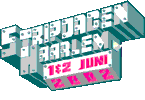Currently, Japanese comics dominate the comic market in Indonesia. They are selling
numerous characters along with their cartoon animation (anime) and merchandise
that range to advanced multimedia gadgets, such as Play Station and Nintendo
game console.
The Japanese comics appear in various styles. They employ
good marketing strategies and come up with a good branding. Moreover, they
offer exciting stories with strong characters (ranging from animals and
human to machines, from robots, hybrid creatures to even more imaginative
creatures) to their audiences. Indonesian comics has a different approach.
We may not be able to compete with their drawing skills and techniques,
but we have a rich source of stories from our various cultural background.
However, the drawing styles of Indonesian comics were influenced by American
Comics (Marvel, DC, Darkhorse, Image, etc.), European comics and aalso the
Japanese Manga. All those foreign comics were so attractive that they inspire
the Indonesian younger generation to make their own comics. Marvel from
America is different. It shows magnificent super heroes with different super
powers. It has a huge effect to young generations of comic readers. This
generation was booming before the popularity of the Japanese comics. Superman,
Batman, Spiderman and the others are very famous and well-known among the
young comic readers in Indonesia.
But, if we dig up again, the young generation
also loves to read European comics such as Tintin, Roel Dijkstra, Lucky
Luke, Asterix, etc. It is a pity that we only know them (the comic characters)
through their two-dimentional appearance in strips. We are lack of information
about their creation; about the background, the process, and even about
the artists themselves. Those Eropean comics were very popular in Indonesia.
Unfortunately, Indonesian readers only knew them through their publication
as one-page strips in magazines. So when those comics series were released
as comic albums, most readers were reluctant to buy them, since they already
knew what the whole story was all about (with the exception of some very
popular albums that are worth collecting).
This might have been the cause of the decrease of European comic
album distribution in Indonesia. However, this phenomena happened tens of years ago.
We have noticed that there are a number of new European comics, created by young, talented, artists, with
a potential to capture faithful readers, that are released in many countries
but not in Indonesia. Therefore we also expect MADJOE! to attract the attention
of Indonesian publishers to revive European comics readers in Indonesia.
At present, there are a lot of comic communities in Indonesia. They create
comic only as a hobby, without any profit motivation or business ambition.
Most of them are students who have lots of time to create fictional characters
and stories and to develop their skills. Therefore, it is no wonder that
Indonesian publishers are afraid to commit to publishing local comic albums.
Moreover, publishers still think of comics/strips as only a filler for their
magazines or newspapers. They always ask for inexpensive comics in many
pages of drawings. In the end, the magazines and newspaper hire only the
most popular comic artists. There are several comic artists who dedicate
themselves for years in magazines or newspapers. For example: Panji Koming
from Kompas daily newspaper. Panji Koming is actually an abbreviation from
Kompas Minggu (or Sunday Kompas), because Panji Koming is released only
on Sunday editions. We are trying to keep our Indonesian comics running
in a proper way.
We are still trying to keep tracks on our older comic artists
and their works. Aside from that effort, it is not an easy task to revive
the spirit of original Indonesian comics. We are keeping in touch closely
with other local comics studios, artists and personnels to discuss and exchange
our experience. One potential comic community is Masyarakat Komik Indonesia
(MKI), or Indonesian Comic Community. This community was establisehd at
the First National Comic Exhibition in Jakarta. There were humongous positive
responses towards this community, moreover from small comic studios in several
cities of Indonesia. Through MKI, we can easily keep in touch with each
other.


